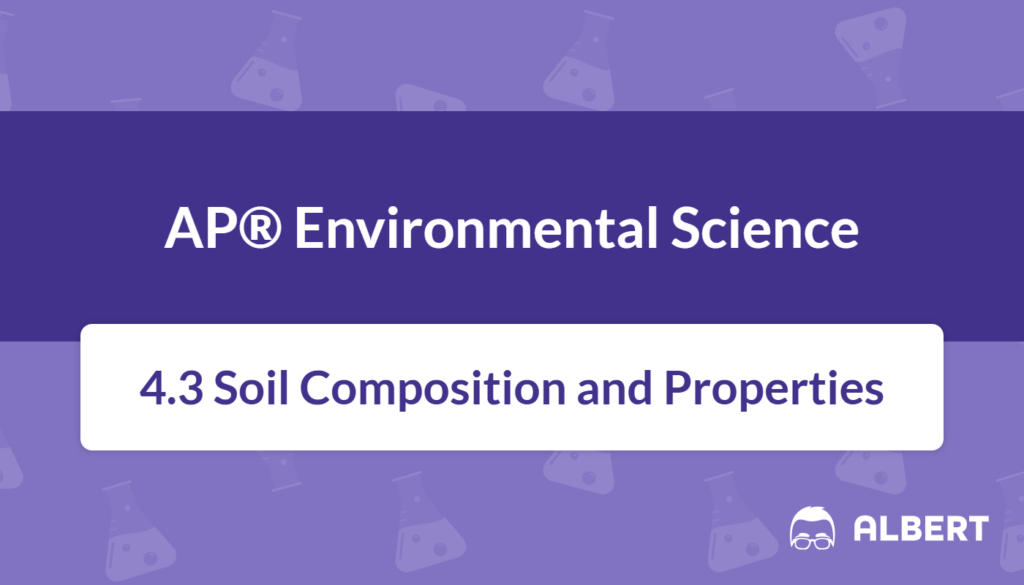What We Review
Introduction
Soil is a living, dynamic system formed by the interaction of geology, climate, and organisms over long periods. Because soil underpins plant growth, water filtration, and nutrient cycling, it plays a central role in environmental processes. Therefore, recognizing soil composition and how its properties vary becomes essential for effectively managing land resources and predicting environmental outcomes.
Soil consists of minerals, organic matter, water, and air. Its properties—including porosity, permeability, fertility, and water holding capacity—help determine which crops can thrive and how water moves through an area. Scientists apply a range of physical, chemical, and biological tests to protect and optimize soil use.
Understanding Soil Composition
Definition of Soil Composition
“Soil composition” refers to the relative amounts of minerals, organic matter, water, and air that make up a soil sample. A balanced mix of these components creates an environment conducive to robust plant growth and efficient nutrient cycling.
Components of Soil
- Minerals
- Minerals comprise the largest portion of most soils and originate from weathered rocks. For instance, sand, silt, and clay particles each originate from different stages of rock breakdown.
- Organic Matter
- Decomposed plant and animal material forms the organic fraction of soil. This portion includes nutrients essential for plant development. Organic matter also improves soil structure and renews fertility through decomposition.
- Water
- Soil water supplies essential moisture to plants, dissolves nutrients, and aids in chemical reactions. However, water availability depends on factors like rainfall and the soil’s water holding capacity.
- Air
- Tiny pockets of air occupy the spaces between soil particles. This air is crucial for root respiration and microbial processes.
Example: Analyzing Soil Layers
Soils develop layers called horizons, each with unique characteristics. Analyzing them can reveal a soil’s overall composition.
Step-by-Step Example: Identifying Soil Layers in a Garden Plot
- Select a section of ground, about 1 meter square.
- Use a small shovel to dig a vertical hole 30–40 centimeters deep.
- Observe color and texture differences horizontally across the slice. The top layer (O horizon) often contains decomposing leaves and organic litter. Below that, an A horizon (topsoil) typically contains a mix of organic matter and minerals.
- Document the thickness and color of each layer. Note how the organic material content decreases as you go deeper.
- Record any unique features, such as roots or small rocks, in each horizon.
This simple exercise reveals how minerals, organic matter, water, and air are distributed in distinct layers.
Properties of Soil
Definition of Soil Properties
“Soil properties” refer to measurable characteristics that influence how soil behaves in various environmental conditions. These properties impact plant growth, water movement, and nutrient availability.
Key Properties
- Porosity
- Porosity describes how much empty space, or pore space, exists in soil. Mathematically, it can be expressed as: \text{Porosity} = \frac{\text{Volume of pores}}{\text{Total volume}} \times 100%
- Higher porosity generally indicates greater water storage and aeration capacity.
- Permeability
- Permeability measures how easily fluids (such as water and air) flow through the soil. Soils with high permeability, like sandy soils, drain water quickly yet may lack sufficient water retention.
- Fertility
- Fertility reflects the soil’s ability to provide essential nutrients—like nitrogen, phosphorus, and potassium—to plants. Organic matter, mineral composition, and pH levels are all factors that contribute to fertility.
- Water Holding Capacity
- Water holding capacity is the amount of water that soil can retain against gravity. This property helps determine how frequently one must irrigate crops and how well plants can endure periods of drought.
Example: Testing Soil Properties
Step-by-Step Example: Testing the Water Holding Capacity of Two Soil Types
- Gather two soil samples, for instance, a sandy soil and a loamy soil.
- Place each sample in a separate funnel lined with a coffee filter.
- Pour a fixed volume of water (e.g., 100 mL) into each funnel.
- Collect the water that drains into a container below and measure its volume.
- Subtract the water drained from the initial volume (100 mL) to find the water retained.
- Compare results. The soil that retains the greater volume of water demonstrates a higher water holding capacity.
These simple observations can reveal a great deal about soil behavior, which is crucial for agricultural planning and environmental monitoring.
Soil Types and Their Characteristics
Overview of Different Soil Types
Several broad categories of soil exist, each with varied particle sizes and compositions:
- Sandy Soil
- Characterized by large particles, this soil often has significant porosity and high permeability but relatively low water holding capacity.
- Clay Soil
- Made up of very fine particles, clay soil has tiny pore spaces that typically allow it to hold more water but limit drainage and aeration.
- Loamy Soil
- Loamy soil features a balanced mix of sand, silt, and clay, giving it favorable moisture retention, aeration, and nutrient content.
Comparison of Key Properties
- Sandy Soil: High permeability; low water holding capacity; moderate to low fertility.
- Clay Soil: Low permeability; high water holding capacity; can be fertile but often needs careful management to avoid waterlogging.
- Loamy Soil: Balanced permeability; moderate to high water holding capacity; often known for good fertility.
Each soil type affects agricultural practices and plant growth. Sandy soils may need frequent irrigation. Clay soils might require drainage strategies. Loamy soils often represent an ideal balance for many crops.
Example: Using a Soil Texture Triangle
A soil texture triangle is a common tool for classifying soil based on the percentage of sand, silt, and clay.

Step-by-Step Example: Classifying a Sample Using the Soil Texture Triangle
- Perform a particle size analysis on your soil sample (often done in labs or via sedimentation tests).
- Calculate the percentage of sand, silt, and clay.
- Locate those percentages on the three sides of the soil texture triangle.
- Trace the lines inward from each axis until they converge on a region in the triangle.
- Note the labeled region (e.g., sandy loam, silt loam, clay loam).
This process is essential for understanding how a particular soil might behave regarding water and nutrient movement.
Methods to Test Soil Properties
Why Testing is Important
Testing soil properties allows for informed decisions about irrigation, fertilization, and land management. Results can guide sustainable practices and ensure that soil remains productive over time.
Common Methods of Testing
- Chemical Tests
- These evaluate nutrient levels (like nitrogen, phosphorus, and potassium) and measure pH. High or low pH influences nutrient availability and crop growth.
- Physical Tests
- Physical methods measure particle size distribution, bulk density, and soil moisture content. A simple ribbon test—rolling soil between fingers—helps recognize clay content by how well it forms a ribbon.
- Biological Tests
- These analyze the presence of microorganisms, such as beneficial bacteria and fungi. Healthy soils typically show active microbial processes.
Example: Conducting a Simple Soil pH Test Using Household Materials
Step-by-Step Example
- Collect a half cup of soil from a specific site.
- Remove large particles like pebbles or twigs.
- Place the soil sample in a clean container.
- Add a small amount of distilled water and stir to make a paste.
- Pour some white vinegar into the paste; fizzing indicates an alkaline soil with a higher pH.
- Alternatively, sprinkle baking soda on the soil paste; fizzing suggests acidity.
- For more accurate readings, use pH test strips or a handheld pH meter.
This quick test can guide you in deciding whether soil amendments (like lime for acidic soil) are necessary.
Conclusion
Soil composition and properties shape everything from crop yields to water retention in natural ecosystems. Minerals, organic matter, water, and air come together in layers that provide the basis for life on land. Properties like porosity, permeability, fertility, and water holding capacity determine soil performance. Different soil types—from sandy to clay to loamy—feature distinct balances of these properties, influencing how plants grow and how water moves. By performing tests such as measuring water holding capacity, pH levels, or soil texture, environmental scientists and land managers can make informed decisions. As an AP® Environmental Science student, developing a solid understanding of these concepts is crucial for tackling exam questions and, more importantly, for appreciating the importance of soil in sustaining life.
Key Vocabulary
- Soil Composition: The relative amounts of minerals, organic matter, water, and air in a soil sample.
- Porosity: The percentage of open spaces or pores within soil particles that can hold air or water.
- Permeability: A measure of how easily water and air can flow through the soil.
- Fertility: The ability of soil to supply essential nutrients to plants for growth.
- Water Holding Capacity: The total amount of water soil can retain against gravity, important for plant survival in dry conditions.
- Soil Horizon: A distinct layer of soil, each with varying compositions of minerals and organic matter.
Sharpen Your Skills for AP® Environmental Science
Are you preparing for the AP® Environmental Science test? We’ve got you covered! Try our review articles designed to help you confidently tackle real-world AP® Environmental Science problems. You’ll find everything you need to succeed, from quick tips to detailed strategies. Start exploring now!
- AP® Environmental Science: 3.8 Review
- AP® Environmental Science: 3.9 Review
- AP® Environmental Science: 4.1 Review
- AP® Environmental Science: 4.2 Review
Need help preparing for your AP® Environmental Science exam?
Albert has hundreds of AP® Environmental Science practice questions, free response, and full-length practice tests to try out.








